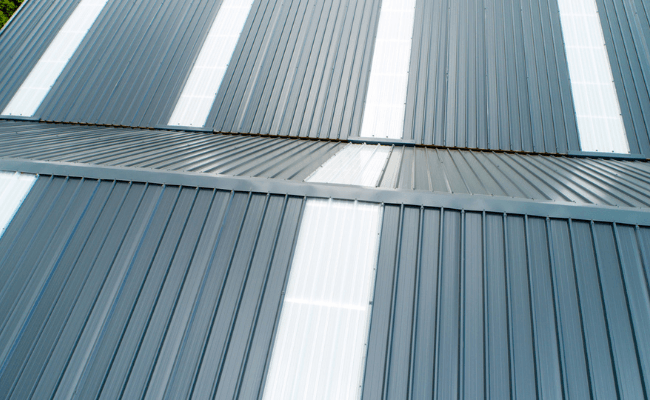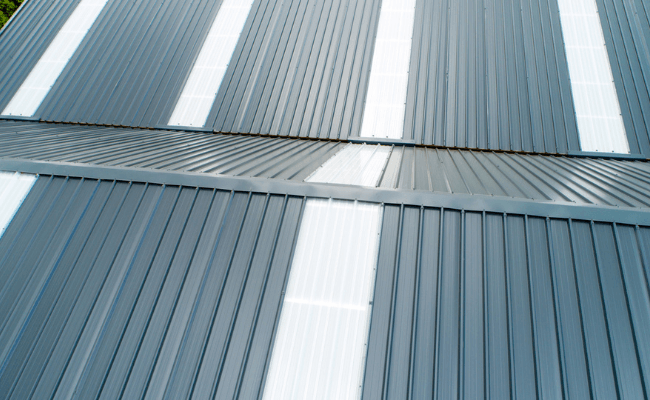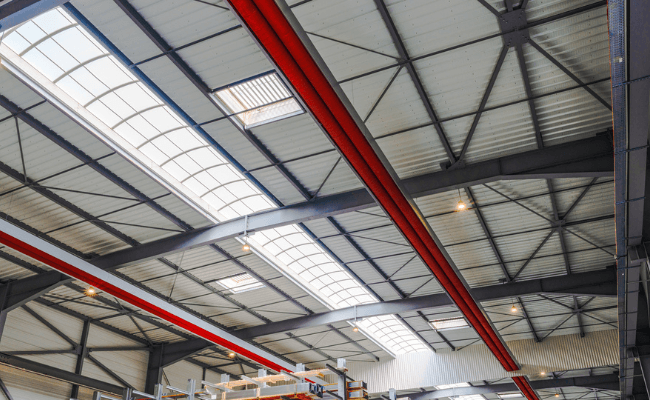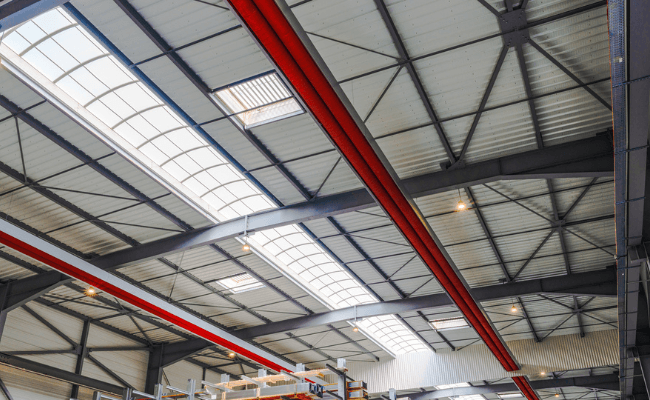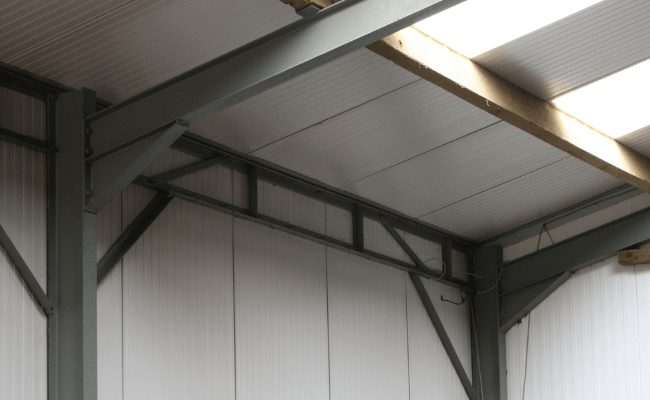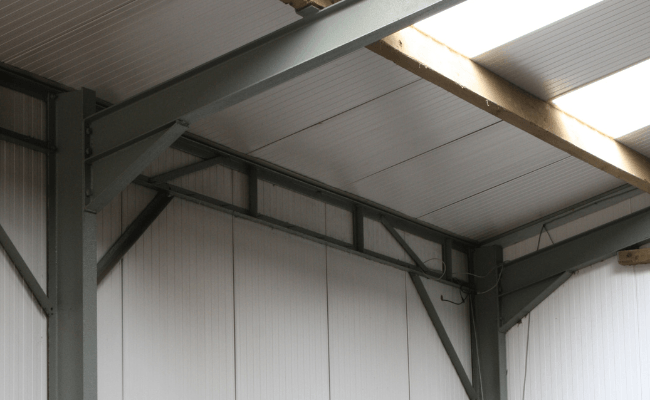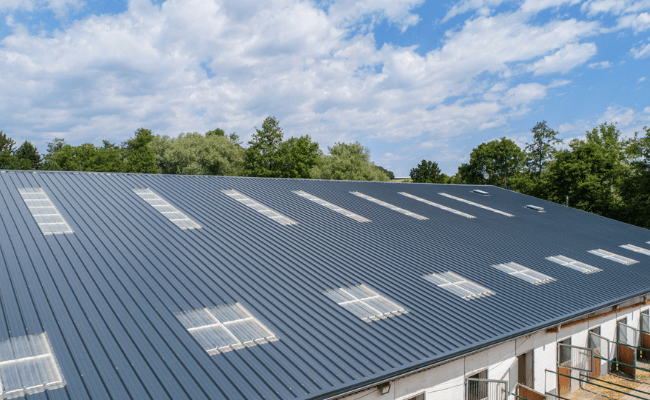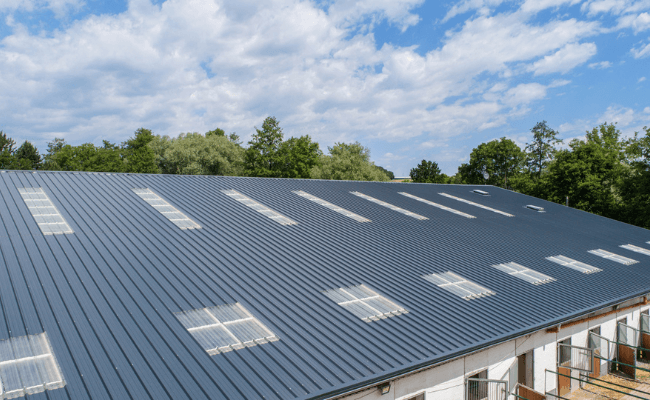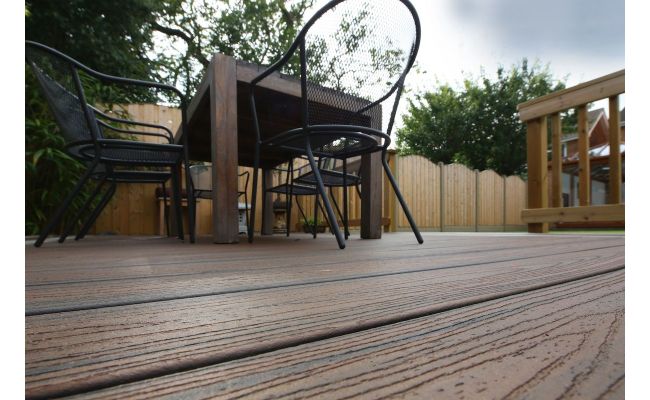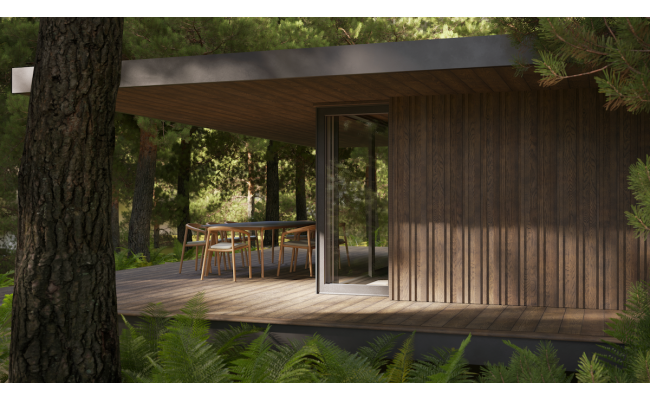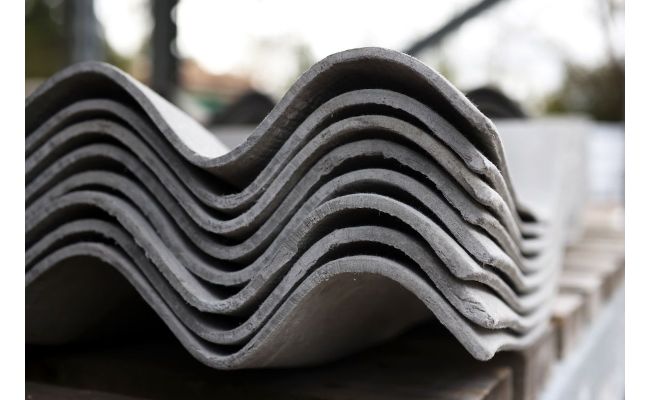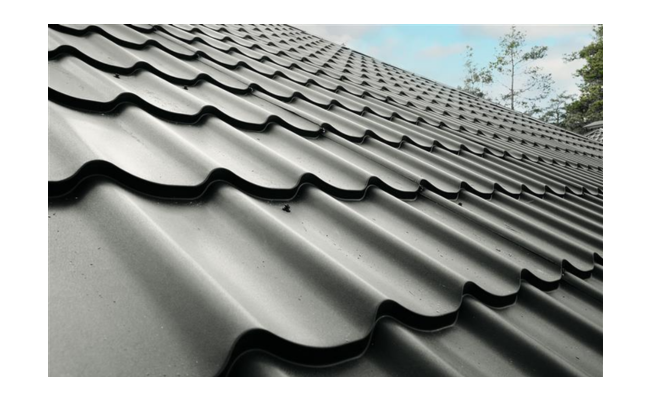At a time when every business is thinking about how to lower energy costs, and how to reduce carbon emissions, rooflights are growing in popularity.
These translucent roof sheets allow natural light into a building, reducing the need for electric lighting during daylight hours.
Interspersed alongside a range of different types of solid sheets, they can be a cost-effective and robust solution for a range of buildings.
Glass Reinforced Polyester (GRP) Rooflights are a good example.
This product is made from translucent material, which means you cannot see through the sheets, but they still let light in. And life expectancy is an impressive 25-30 years.
GRP has advantages over other rooflights because it spreads light throughout a building, rather than projecting it in a specific spot. It is also stronger and more durable than plastic alternatives.
What buildings are suitable for rooflights?
Rooflights are most suitable for industrial, agricultural, and retail settings (including outbuildings, workshops, stables, barns, and warehouses).
How can rooflights save you money on energy bills?
Analysis from the National Association of Rooflight Manufacturers (NARM) suggests annual savings in running costs of 14% can be achieved – and an annual reduction in CO2 emissions of 11%.
When you multiply that across the lifespan of the product it’s good news for the bottom line – and good news for the environment.
In fact, this narrative is creating a shift in the market. People had moved away from rooflights to use LEDs instead, but now they are switching back – or at least combining the two.
LEDs are cheap to run but with rooflights it costs nothing to light a building in daylight hours and they can also provide a heating effect during colder months.
How many rooflights do I need?
This is an important calculation and depends on what the building is being used for.
NARM recommends 15-20% equivalent of the floor area being rooflights, but in some circumstances that might change.
Using too many rooflights in the wrong setting could make a building too hot in summer, which is a problem for dairy farmers, for instance. Heat stress can dramatically reduce a cow’s efficiency in producing milk, by up to 200 litres per cow over the course of a summer according to recent reports.
Too many rooflights can also lead to problems with condensation, especially when you have a lot of animals breathing and sweating inside.
So, it is often better in that context to use fibre cement roof sheets(which absorb 25% of their weight in moisture) alongside just a few rooflights
At Southern Sheeting we are here to help with any product and project enquiries.
